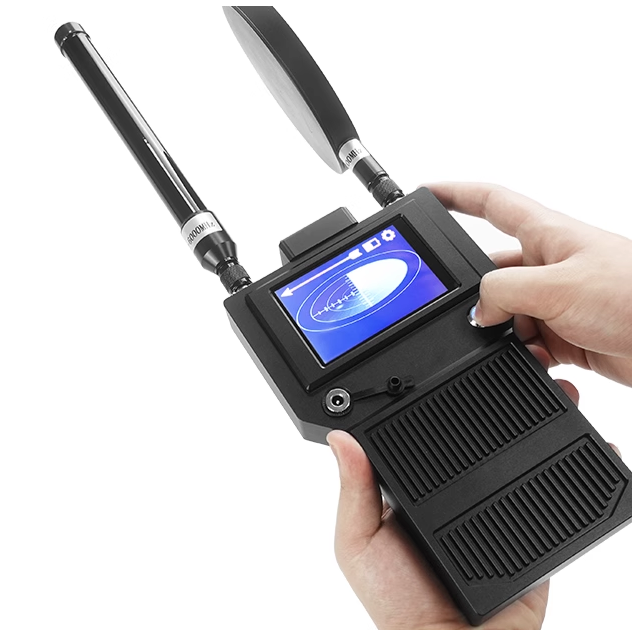The proliferation of unmanned aerial vehicles in urban spaces has created an increasing need for effective drone jammers. These sophisticated devices have become essential tools for protecting privacy, securing sensitive locations, and maintaining airspace safety in our rapidly evolving cities. As drone technology advances, so too must our approach to managing and controlling these aerial devices in densely populated areas.
Urban environments present unique challenges for drone control, requiring specialized jamming solutions that can operate effectively amidst buildings, electromagnetic interference, and complex flight patterns. The latest drone jammer technology has evolved to meet these demanding requirements, offering precision targeting while minimizing disruption to other essential wireless communications.
Modern drone jammers incorporate advanced signal detection capabilities that can identify and analyze various drone communication protocols. These systems continuously scan the electromagnetic spectrum, detecting potential drone signals and distinguishing them from legitimate wireless communications. The detection module typically operates across multiple frequency bands, including 2.4GHz, 5.8GHz, and GPS frequencies commonly used by commercial drones.
Advanced signal analysis algorithms help minimize false positives and ensure that the drone jammer responds only to actual threats. This precision is particularly crucial in urban settings where numerous wireless devices operate simultaneously.
Effective urban drone jammers utilize directional jamming technology to focus their counter-drone signals precisely where needed. This targeted approach prevents unnecessary interference with surrounding electronic equipment and communications infrastructure. The latest systems employ phased array antennas and beam-forming techniques to create concentrated jamming zones.
The directional capabilities allow operators to maintain control over specific areas while minimizing the impact on adjacent spaces. This precision is essential for dense urban environments where multiple electronic systems coexist within close proximity.

When selecting a drone jammer for urban use, range and coverage considerations become paramount. The ideal system should provide adequate protection for the intended area while accounting for urban obstacles and signal reflections. Modern jammers typically offer adjustable power settings and multiple antenna configurations to optimize coverage patterns.
Advanced models incorporate smart power management systems that automatically adjust output levels based on the detected threat and environmental conditions. This dynamic adaptation ensures effective coverage while conserving energy and minimizing electromagnetic pollution.
Urban drone jammers must seamlessly integrate with existing security infrastructure and comply with local regulations. The best systems offer multiple interface options for connecting to security networks, surveillance systems, and command centers. This integration capability ensures coordinated responses to drone threats and enables comprehensive security management.
Compatibility with various drone detection systems and the ability to receive software updates for emerging drone threats are crucial features for long-term effectiveness. Modern jammers often include API support for custom integration solutions.
Operating a drone jammer in urban areas requires careful attention to regulatory requirements and compliance standards. Different jurisdictions maintain varying restrictions on radio frequency interference devices, making it essential to select equipment that meets local legal parameters. Professional-grade systems typically include built-in compliance features and safety protocols.
Documentation and certification requirements must be carefully reviewed when choosing a drone jammer. Many manufacturers provide regulatory compliance assistance and maintain updated databases of applicable laws and regulations.
Urban deployment demands robust safety features to prevent unintended consequences of jamming operations. Quality drone jammers incorporate multiple failsafe mechanisms, including automatic shutdown protocols, power limiting controls, and real-time monitoring systems. These safety features protect both operators and nearby electronic systems from potential interference.
Emergency override capabilities and rapid deactivation controls are essential for responding to changing situations or unexpected developments in the urban environment. Regular testing and maintenance procedures help ensure these safety systems remain effective.
Successful urban drone jammer implementation requires careful planning and site assessment. Factors such as building heights, signal propagation patterns, and potential interference sources must be considered when determining optimal installation locations. Professional site surveys and RF environment analysis help ensure effective coverage and minimal disruption.
Strategic placement of multiple units may be necessary for comprehensive protection of larger areas or complex architectural environments. Modern planning tools and simulation software can assist in optimizing deployment configurations.
Operating drone jammers effectively requires proper training and regular maintenance. Qualified personnel must understand system capabilities, operational procedures, and emergency protocols. Ongoing training programs help ensure operators remain current with evolving threats and technological advances.
Maintenance schedules should include regular performance testing, software updates, and hardware inspections. Documentation of operational procedures and maintenance activities supports compliance requirements and system reliability.
Effective range varies significantly based on environmental factors and system specifications. Most professional-grade urban drone jammers provide reliable coverage from 500 meters to 3 kilometers, depending on conditions and configuration. However, urban obstacles and interference may affect actual operational range.
Work with reputable manufacturers who provide detailed compliance documentation and regulatory guidance. Consult with local authorities and legal experts familiar with RF regulations. Many professional systems include built-in compliance features and certification documentation.
Modern drone jammers are designed to minimize interference with other electronics through directional targeting and frequency-specific operation. However, proper installation, configuration, and operation are essential to prevent unintended disruption of nearby systems.